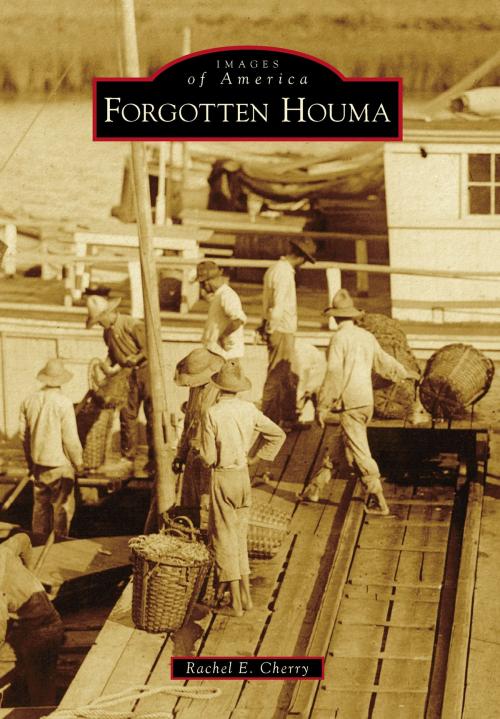| Author: | Rachel E. Cherry | ISBN: | 9781439649152 |
| Publisher: | Arcadia Publishing Inc. | Publication: | January 26, 2015 |
| Imprint: | Arcadia Publishing | Language: | English |
| Author: | Rachel E. Cherry |
| ISBN: | 9781439649152 |
| Publisher: | Arcadia Publishing Inc. |
| Publication: | January 26, 2015 |
| Imprint: | Arcadia Publishing |
| Language: | English |
Houma officially became the seat of Terrebonne Parish in 1848; however, the area known as "terre bonne" ("the good earth") was inhabited much earlier. The Houma tribe settled the land as early as 1760, Arcadian French settlers arrived by 1785, Spanish settlers by 1790, and wealthy English landowners established the area's first plantations in 1828. Agriculture, hunting, and fishing activities such as oyster harvesting and shrimp drying were prominent occupations in the parish until the oil and gas industry took hold of the economy in the 1920s. Seemingly endless waterways, marshes, and bays, coupled with fertile farmland and oil production, helped foster Houma's lucrative economy; likewise, a blend of customs, traditions, and natural disasters have shaped its unique culture. Forgotten Houma uses vintage photographs to capture the community before modernization and destruction, awakening the spirits of former residents and the memories of earlier ways of life.
Houma officially became the seat of Terrebonne Parish in 1848; however, the area known as "terre bonne" ("the good earth") was inhabited much earlier. The Houma tribe settled the land as early as 1760, Arcadian French settlers arrived by 1785, Spanish settlers by 1790, and wealthy English landowners established the area's first plantations in 1828. Agriculture, hunting, and fishing activities such as oyster harvesting and shrimp drying were prominent occupations in the parish until the oil and gas industry took hold of the economy in the 1920s. Seemingly endless waterways, marshes, and bays, coupled with fertile farmland and oil production, helped foster Houma's lucrative economy; likewise, a blend of customs, traditions, and natural disasters have shaped its unique culture. Forgotten Houma uses vintage photographs to capture the community before modernization and destruction, awakening the spirits of former residents and the memories of earlier ways of life.















